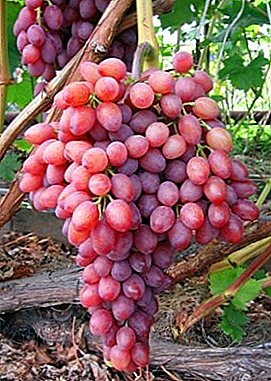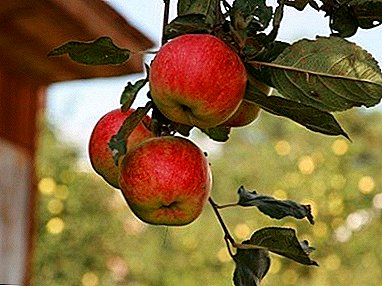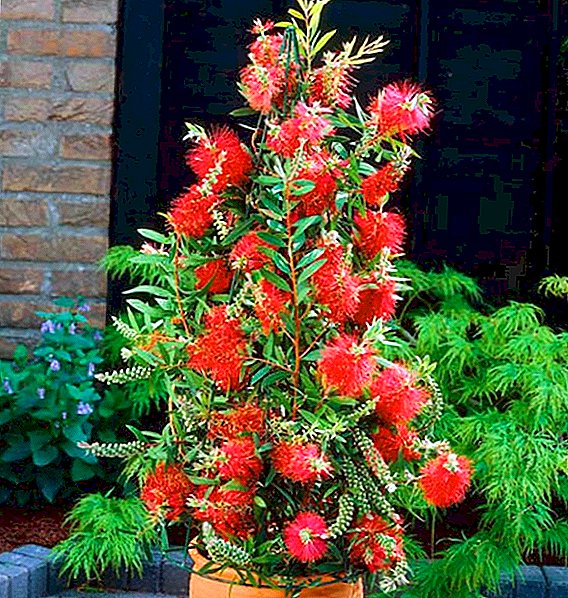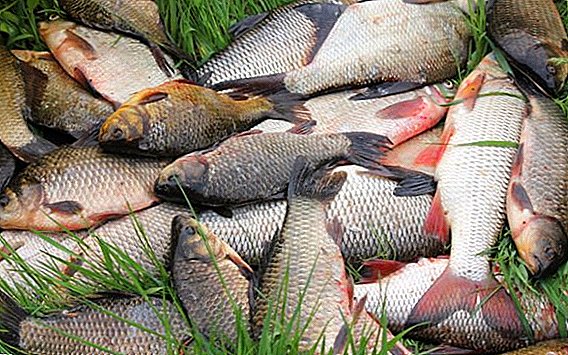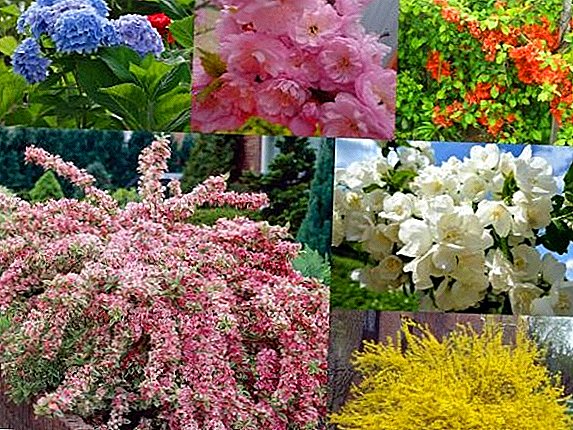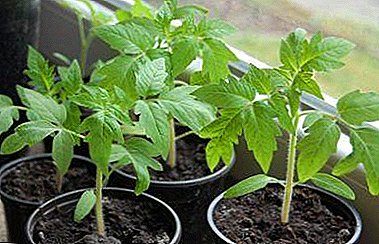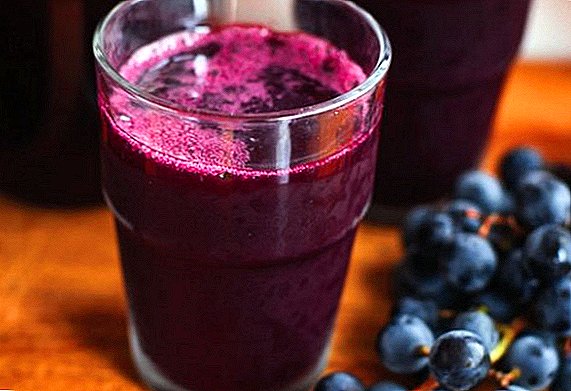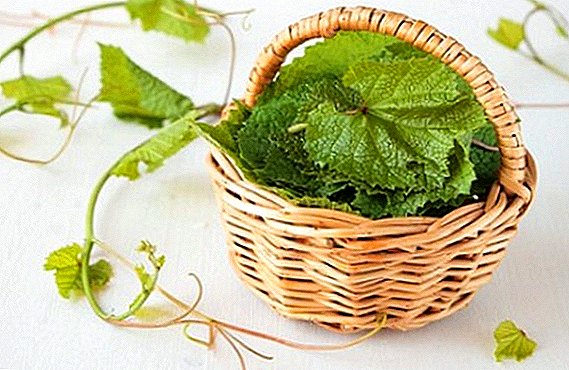 We used to see clusters of fresh grapes in stores and supermarkets. It is of different varieties and has a different taste. Not everyone knows that not only fruits can be used, but also the leaves of this plant. They are used in cooking, cosmetology and in everyday life, harvested in a dry, fresh form, produce decoctions and infusions. Next, let's talk about the benefits of grape leaves for a person, the intricacies of their preparations and recipes for preparation.
We used to see clusters of fresh grapes in stores and supermarkets. It is of different varieties and has a different taste. Not everyone knows that not only fruits can be used, but also the leaves of this plant. They are used in cooking, cosmetology and in everyday life, harvested in a dry, fresh form, produce decoctions and infusions. Next, let's talk about the benefits of grape leaves for a person, the intricacies of their preparations and recipes for preparation.
Botanical characteristic
If the berries on different vines are significantly different, then the leaves of most grape varieties are typical. They are three-bladed or divided into five blades. Some varieties have an almost solid leaf. The edge is cut with teeth, the veins are pronounced.
The flesh of the leaves is thin, not fleshy, so moisture does not take much from the vine. The color ranges from pale green to rich green, there are golden blotches. Color saturation increases as it matures.
The leaves protect the fruit from hail, heavy rain and heat, and retain its elasticity for a long time. They are small, medium and large, on older bushes - larger.
Important! To collect grape leaves for harvesting them for the winter you need in mid-June or early July. During the flowering period of the vine, they are rather tender to taste good in dishes, and nutritious enough to give maximum benefit.

Beneficial features
The benefits of this product are due to its rich vitamin composition:
- Most of it contains fat-soluble vitamin K and retinol. These vitamins respond to hematopoietic function, strengthen the cardiovascular system, prevent the appearance of sclerotic plaques.
- The high content of vitamin C helps to strengthen the immune system, localizes inflammatory processes and accelerates postoperative recovery.
- Vitamins A and E improve the appearance of the skin: smooth fine facial wrinkles, refresh the complexion.
- Organic acids are present in excess in this product. They will positively affect mental activity, will prevent age-related changes in the brain.
- A large amount of zinc contained in the leaves will improve the functioning of the reproductive system, both in men and women. Its rejuvenating effect is useful for women with age-related skin changes.
The leaves also have a useful ability to clean the intestines from toxins, bind and remove toxins from the body.
Tibetan lofant, coconut milk, white mar, dried bananas, homemade fern, Caucasian hellebore, lagenaria, broccoli, spirulina, amaranth, horseradish, spinach will help remove toxins and toxins from the body.
They improve intestinal peristalsis, relieve constipation. Their bactericidal and antiseptic properties are useful for intestinal disorders, diseases of the oral cavity and minor skin lesions. 
Did you know? More recently, the grapes on the wine choked exclusively by hand. More precisely, feet. There was a whole grape pressure culture after harvesting it. In the wine-making villages, music began to sound, in vats with bunches of berries there were round dances. At that time, the grapes were not very carefully separated from the leaves, and the winemakers' health improved markedly from constant contact with the gruel. It was noticed that the grapes, cleared of leaves, act on the skin and joints not as beneficially as the clusters do in conjunction with the foliage.
Application of grape leaves
Nature has taken care to cover ripe berries with leaves from the weather. The man found the leaflets another use, and now uses them not only in everyday life, but also in medicine and in cooking.
In folk medicine
Most often this product is used as raw and powder compresses:
- It is dried and crushed, and then used to stop bleeding.
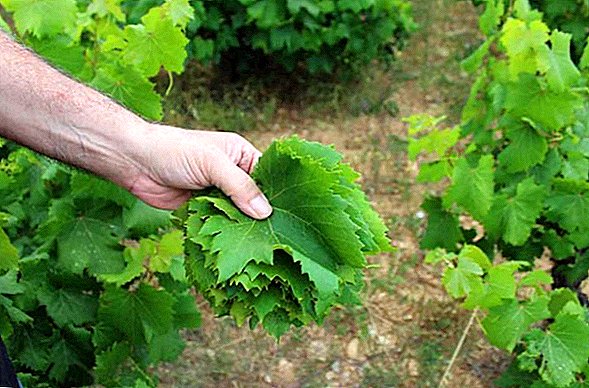
- Antiseptic and bactericidal action of the leaves accelerates the healing of small and large wounds on the skin and in the mouth.
- Folk doctors recommend chewing young grape leaves with periodontal disease, carious lesions and gingivitis.
- The high content of calcium and fluoride makes this product a good way to strengthen teeth and bone tissue, and in the form of compresses, and for internal use.
- Tannins tannins, which are part of the leaves, significantly improve blood circulation and lymph flow. They eliminate puffiness, help to remove excess fluid from the body.
- Leaves and pasty mixtures attached to problem areas reduce varicose veins and spider veins. Pain disappears, and the capillaries are narrowed, thereby preventing the appearance of venous stasis.
Familiarize yourself with the beneficial properties of grapes.
The internal use of juice, squeezed from fresh leaves, saves from problems with the stomach and intestines. This juice softens the mucous membranes with stomach ulcers and gastritis. It lowers acidity, stops internal intestinal bleeding and vomiting, soothes nausea.  It is believed that it also enhances male potency and increases libido. Regular use of the juice of these leaves reduces hemoptysis. Its healing effect on the urinary tract is noted - it reduces the burning sensation, destroys bacterial infections and stimulates the excretion of sand and small stones from the kidneys.
It is believed that it also enhances male potency and increases libido. Regular use of the juice of these leaves reduces hemoptysis. Its healing effect on the urinary tract is noted - it reduces the burning sensation, destroys bacterial infections and stimulates the excretion of sand and small stones from the kidneys.
In cosmetology
Best of all, this product acts on oily skin with dilated pores:
- in the composition of the masks, it has a peeling and polishing effect;
- tannins tighten the skin of the face and neck, make deep wrinkles less noticeable and remove small folds;
- gruel from fresh leaves narrows and cleanses the pores, refreshes the complexion, removes signs of fatigue;
- It is recommended to make compresses of sheets for tired eyes. They remove redness and swelling, reduce bags under the eyes.

Broths and infusions of grape leaves, included in skins and shampoos, relieve dandruff scalp prone to oily skin. They make hair color more saturated, restore natural shine and strengthen hair follicles, stimulating hair growth.
Juice, pressed from young leaves, is used to remove and lighten warts, keratomas, age spots and freckles.
To strengthen the hair in traditional medicine, they also use evasive peony, birch buds, pine essential oil, bitter pepper, sedge, jujube, nettle, black cumin oil, nasturtium, bergamot and mustard.
In cooking
The low calorie content of this product allows it to be used in therapeutic and dietary nutrition. The most famous dish of grape leaves, dolma, is prepared in many eastern countries.
Important! Do not use this product for pregnant women and young mothers who are breastfeeding. Binding tannins in foliage inhibit the functioning of the mammary glands, and the baby will begin to experience a shortage of milk.

This popular food in Greece, Turkey, Georgia is a kind of analogue for our stuffed cabbage: minced meat and cereals, wrapped in scalded or boiled sheets. Grape leaves are perfectly combined with smoked meat and poultry, legumes (lentils, beans), in finely chopped form are part of the sweet pilaf.
They are used as a wrapper for fish and vegetable fillings, pickled with vegetables and pickled with berries, wrapped in separate rolls. Sometimes young leaves are finely cut and dried, and then they are made from them refreshing kvass and tea.
Did you know? The vine is present in Slavic culture and in pagan and pre-Slavic symbolism. One of the goddesses revered by the ancient Slavs, Lada, holds an apple in one hand on all images, and a bunch of grapes with foliage as a symbol of fertility and well-being in the other.

At home
Most often, the leaves are used to shelter the vines for the winter. They long retain a dense texture and protect sensitive plants from the cold. They are mixed with sawdust in general and crushed, may be covered on top with polyethylene or sacking (for better ventilation).
They become a rich fertilizer for fruit trees and flower beds. Land sprinkled with fallen leaves, and then loosened, tolerates winter frosts better and gives a good harvest for the next year.
Harm and side effects
This generally beneficial product can harm people suffering from diabetes. Especially dangerous in this regard is juice, which contains up to 20% of sugars. Care must be taken to use grape leaves for people with cancer.
Increased flatulence, as a side effect of the abundant reception of leaves, can harm those who suffer from acute colitis. It is not recommended to use this product to people with tuberculosis and pregnant women in the last weeks before childbirth. 
Important! Do not take infusions and decoctions of foliage when coughing, as they can accelerate blood circulation and provoke rupture of the capillaries in the lungs.
Harvesting and storage of raw materials
The method of preparation of raw materials for culinary and cosmetic purposes is no different:
- It is best to collect leaves from light grape varieties, as they have a more delicate texture and give the dishes an exquisite sourness.
- Begin to collect the leaves during the flowering period, until they coarsened, and began to wither in the heat.
- Cut off leaf sheets only from healthy vines growing far from industrial areas and major roads.
- Let the cuttings remain on the vine; collect the plates in baskets or canvas bags.
- Be sure to leave at least a third of the leaves so that the flowers, and then the clusters, have weather protection.
- Number determined by the needs of the family. Two kilograms of leaves collected per season will be enough for one adult person.
- To keep the leaves of their beneficial properties, preserve them by freezing, pickling, salting or dry freezing.
Video: how to harvest grape leaves
Cooking recipes
Different methods of preparation are designed for different further use. For example, salting and pickling are suitable for use in cooking, and drying is for cosmetic recipes.
Did you know? Cultural vines of grapes humanity began to grow in biblical times. Turkish archaeologists have discovered that the first wine grape varieties appeared on the territory of modern Turkey and Iran more than six thousand years ago. True, Swiss archaeologists claim that they managed to find more ancient vines on the lands of modern Switzerland. Unfortunately, the cultivation of this plant in the Swiss countryside in ancient times was rather a spontaneous than a natural phenomenon, so that the palm in this issue remains for the eastern nations.
Salty
The leaves going to the workpiece must be perfectly whole and clean. Go through the leaf mass, exclude all damaged, rotted specimens and those that are damaged by mold.
Video: pickling grape leaves
Wash them in a large bowl of soap and rinse under running water.
Cut off all the cuttings that you might have missed earlier, roll the leaves into rolls of three or four pieces, pack them tightly in half-liter jars. Prepare a saline solution at the rate of 100 g of salt per 1 liter of water. Pour the leaves in jars with this solution and screw the lid loosely.
Dip for thirty seconds in boiling water, tightly close the lids and cool the billet to room temperature. Store in a closed jar in the refrigerator for no longer than a year. An open bank can be stored for three to four days.
This salty product has a spicy, sharp-sour taste, is used in dishes with smoked meat, rice, used in pies and pies with legumes. It can be used only after pre-soaking. 
Tea
Both whole and slightly torn leaves are allowed for drying. They should not be a trace of decay, mold, damage by insects. Rinse and dry the sheet mass on a flat surface. Fold the sheets in the form of envelopes or triangles and lay them in a fruit dryer.
The kitchen oven is also suitable for drying, but in this case you will have to leave the door open. Soak "envelopes" at 65 degrees for six to eight hours, depending on size. Dried raw materials fold in a paper bag or canvas bag.
We advise you to read about the beneficial properties of tea made from blueberry, hawthorn, mountain ash red, princes, rosehip, chokeberry, apples, hibiscus, raspberry leaves, sea buckthorn, currants, blueberries and cherries.
Store in a dry dark place for no longer than a year. From time to time reach out the "envelopes" and air them so that they do not acquire a stale mouse smell. Before use, the leaves are crushed, poured into the teapot and poured boiling water. 
Important! Store decoctions and infusions of foliage in a dark place. If this is not possible, pour them into tinted glass containers, as the bioflavonoids and many vitamins that make up the finished drinks are destroyed by exposure to sunlight.
Soak them for 10-15 minutes, and then pour the required amount of tea leaves into a cup and dilute with hot water in a 1: 1 ratio. For medicinal purposes, this tea should be consumed every day for a month, three cups a day (750 ml total). For the prevention of colds and viral diseases will be enough one cup per day.
Bioflavonoids and organic acids, which are part of grape leaves, reach maximum concentration during drying. They have a stimulating effect on the immune system, the nervous system. Tea from the leaves of red grapes strengthens the cardiovascular system, eliminates hemorrhoids and intestinal disorders, normalizes the menstrual cycle.
A positive effect on the state of the cardiovascular system also have a hellebore, oregano, chervil, cumin, rokambole, hops, oxalis and calendula, silver goof, hawthorn.

Infusion
For its production you will need fresh sheets and hot water. Rinse the grape leaves under running water, cut the stalks from them, fold them into tight lumps and fill the one-liter container with a third. Fill the dishes with boiling water to the top, close the lid tightly and set aside in a dark place.
Soak for three weeks at room temperature, shaking the jar every two days. After this period, the infusion will be ready. You can store it for three months at room temperature, up to six months - in the refrigerator.
Use the infusion for medicinal purposes once a day before meals, ten drops, diluting with 50 ml of water. The treatment course can last two weeks, then you need to take a week break and, if necessary, repeat the treatment.  Hot water dissolves and removes bioflavonoids, anthocyanidins and antioxidant resveratrol from the leaves. These substances have a beneficial effect on the work of the nervous system, strengthen the heart muscle and the walls of blood vessels.
Hot water dissolves and removes bioflavonoids, anthocyanidins and antioxidant resveratrol from the leaves. These substances have a beneficial effect on the work of the nervous system, strengthen the heart muscle and the walls of blood vessels.
Did you know? In the 16th century, the harvest of grape fruits and leaves was a very dangerous occupation. The fact is that before the vine was planted among fruit trees, so that it curled over their crowns. In search of sunlight, the tendrils of the vines stretched to the very tops, so that the collectors had to balance on thin uncomfortable branches. Therefore, the owners of vineyards ensured that before harvesting all workers took care of their wills.
Decoction
To cook the broth, rinse and sort out the sheet mass. Clean it from all damaged and poor-quality sheets, cut the stalks, rotted leaves. Slightly knead the mass with a potato masher, fill it with boiling water at the rate of 100 g of leaves per 500 ml of water.  Put on a slow fire and cook for an hour under a loosely covered lid. The liquid should evaporate by a third. Strain the resulting broth through a clean cotton or gauze cloth, drain into a clean glass container, seal tightly and store in a dark, cool place.
Put on a slow fire and cook for an hour under a loosely covered lid. The liquid should evaporate by a third. Strain the resulting broth through a clean cotton or gauze cloth, drain into a clean glass container, seal tightly and store in a dark, cool place.
The product can be stored for six to eight months. Eat broth to two tablespoons before each meal for three weeks. At the end of the course, you should take a two-week break and, if necessary, repeat the treatment.
For the treatment of varicose veins, the bearded, Adam's apple, the pinnate, the butcher, the white acacia, alocasia and the pine pine resin are also used from the outside.
Also, the decoction can be used as compresses for arthritis, osteoarthritis and varicose veins. Tannins, antioxidants and organic acids will contribute to the restoration of intestinal mucous membranes when ingested.
External use will help strengthen the cartilage of the joints and vascular walls, will be the prevention of age-related degradation of articular bags and varicose veins. Grape leaves - a useful product, which is often neglected. 
Important! The juice of the leaves has a positive effect on the intestinal microflora and its mucous membrane, but in the case of chronic diseases it can provoke internal bleeding. Before you begin to treat this concentrated product, consult with your doctor.
It is available to collect residents of small cities and towns, sold in markets. The leaves are widely used in cooking, medicine and even cosmetology. They are used to improve the quality of the soil, they warm the young vines for the winter.
Harvested for the winter leaves retain their properties until the next season. Take note of the recipes for making leaves and use them to stay healthy even in the harsh winter.



